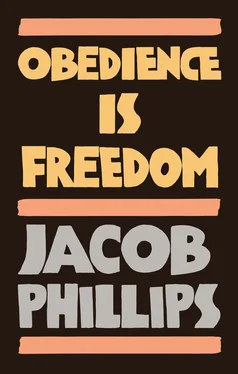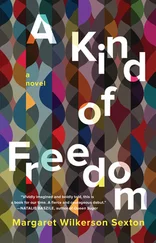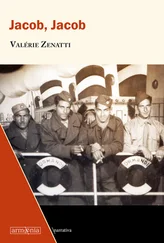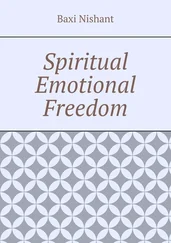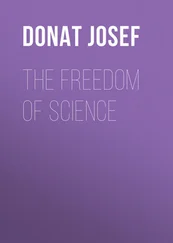There is real a sense of freedom documented by these women who would not consider motherhood mere subservience, freedom from a gynophobic capitalism, which pushed motherhood to the periphery, away from the purportedly more serious, male-dominated workplace. The women’s bind to their infants – their unquestioning allegiance to their children – freed them from the inexorable self-centredness that prevents people from taking responsibility for the wellbeing of others. Once a binary is broken, differentiation is lost because the other side falls out of view. Viewing natality as subservience lapses into a surreptitious totalitarianism. Contemporary society values transience, optionality, re-invention. It fears permanent, unconditional attachment like that of parent and child. Then, living in a culture that dismisses unconditional attachment leaves people conditioned by self-attachment. The drive for self-fulfilment dominates. Disparaging the love more visceral than any other fosters a culture that is less responsible in ways extending far beyond child-rearing itself. A culture in which child-bearing is conditional on self-fulfilment is restrained from developing basic impulses of responsibility and care throughout. This is not to say that only those who have children exercise such responsibilities. It is to say that the degree to which natality is celebrated in a culture is a vital barometer of how responsible that culture is. Obediently accepting the demand of allegiance promises a more genuine freedom, more genuine than that pseudo-freedom that leaves people locked up in themselves.
Seen in this light, it is important not to explain away the inextricability of motherhood and womanhood for Greenham. It is spoken of as something that fostered solidarity between the women. Bodily reproduction, potential or actual, was assumed to be primarily a matter for women, something in which men participate in a very different way. It was not the only touchstone of solidarity, of course. Others included the threat or experience of sexual violence, particularly. This is always lurking in the songs, poems and writings of the women, like the legends of local men peering at them from beneath the brambles, and is often bound up with allusions to domestic circumstances, which led some of the women to ‘up sticks’ and live on the camp in the first place. But men can be victims of sexual violence, albeit far less often, with far fewer cultural apologias and never fostering male solidarity. Bearing the locus of the generation of life in conception, however, and gestating that life, giving birth to it and then suckling it – these were then implicitly assumed to be things men could not possibly do, without question. The exclusive priority of this allegiance of a mother to her child, over all else, meant that women, particularly, felt called to protest against the threat of nuclear war.
For the threat of nuclear war felt terrible to those who had recently borne children into the world. Swade discusses one who was compelled to join the Peace Movement because ‘the mention of nuclear war conjures the waking nightmare of her children burning’. Another describes a recurring dream in which ‘the four-minute warning would come while she was at work’ so she couldn’t ‘cross town in time’ to get to her offspring. 10One woman, Simone Wilkinson, connects her decision to join the first march with an encounter she had with a Japanese woman, while pregnant with her second child. She was told that ‘when a woman was pregnant in Hiroshima, she was given no congratulations but people waited in silence for nine months until the child was born, to see if it was all right’. 11Swade describes the newborn baby as a ‘creature whose every impulse is towards survival but who is so dependent for it upon others’. She goes on, ‘my immediate, instinctive reaction to nuclear war is in my capacity as a mother’. 12The intensity of this inter-human dependence in motherly instincts thus fostered a belonging with any others under threat of nuclear war.
If motherhood could foster the wide-ranging concern for others that drove anti-nuclear protesting, it could even foster a belonging between the two sides that did actually enter into battle. These are the opposing sets of citizens; the women and their opponents in society at large.
For example, the campfires burned at Greenham throughout the Falklands War. Battlelines intersected between the Peace Movement and those celebrating the ‘Gotcha!’ jingoism of ‘Our Lads’ vs ‘the Argies’. On 12 October 1982 there was a victory parade for the returning troops in London. A group of women decided to go, turn their backs on the parade as it passed them and unfurl a banner saying ‘Women Turn Their Backs on War’. An account of this action by Lynne Jones presents it as something not intended to be overly confrontational, as such. She says that the victory in the Falklands was a victory also for British ‘democratic liberties’ and these were lacking in Argentina, so the jubilant crowds could be expected to support that freedom of expression at the parade. Having found a spot along the route, Jones and her group of activists waited incognito among the people with their Union Jacks. She got talking to a mother of one of the returning soldiers. She addresses her account to this woman directly: ‘A plump, smiling woman, your hair freshly done, bright blue eyes, who came and stood right in the middle of our group.’ She goes on: ‘You chose us deliberately, you told me, because we weren’t too tall and you thought you could get a good view over our shoulders.’
They ended up talking a lot as they waited and the disguised Peace Woman helped the military mother with working her new camera. It had just been purchased so the mother could catch a memento of the proud moment her boy marched past with his regiment. Jones mentions a connection between each of the women, centred on motherhood: ‘Here you were, in your best clothes, come a long way with your husband to see your son who’d got home safe from war’ and ‘Here was I, equally glad your son was safe.’ This motherly connection came to a head when the action began and the women unfurled their banner and turned their backs on the soldiers. There was a commotion, with jeers and insults thrown at the women, one of whom broke down in tears at seeing the horrified reaction from their new blue-eyed friend. The military mother cried out, ‘I thought you cared about my son!’ The Peace Woman replied ‘It’s because we care about your son that we’re here!’ The old common land of Greenham was at that moment active in the heart of the capital city. In that moment both sides saw they were coming from the same place, the same set of motherly concerns, they just differed on how those concerns should be realized.
Jones reflects further on what the two women held in common. She writes: ‘We share the same values, you and I. We love freedom and happiness.’ Then she turns to where the difference lay: ‘You would tell me such things can only be maintained because your son fights to protect them’; whereas she would say, ‘The fact he has to fight destroys the things themselves.’ 13This last observation is important. According to this account there is a profound commonality between the women, not just as mothers, but also as each bearing an allegiance to a particular cultural sensibility and set of assumptions described in terms of ‘freedom and happiness’. The difference between them centres on how best to realize and achieve the manner of life they both want. There is common ground, it is just ‘there’. The differentiation is not a broken binary, because neither side refuses to countenance the opposing position. This holds the promise that there is somewhere they can meet, that this particular battle can eventually cease.
Читать дальше
